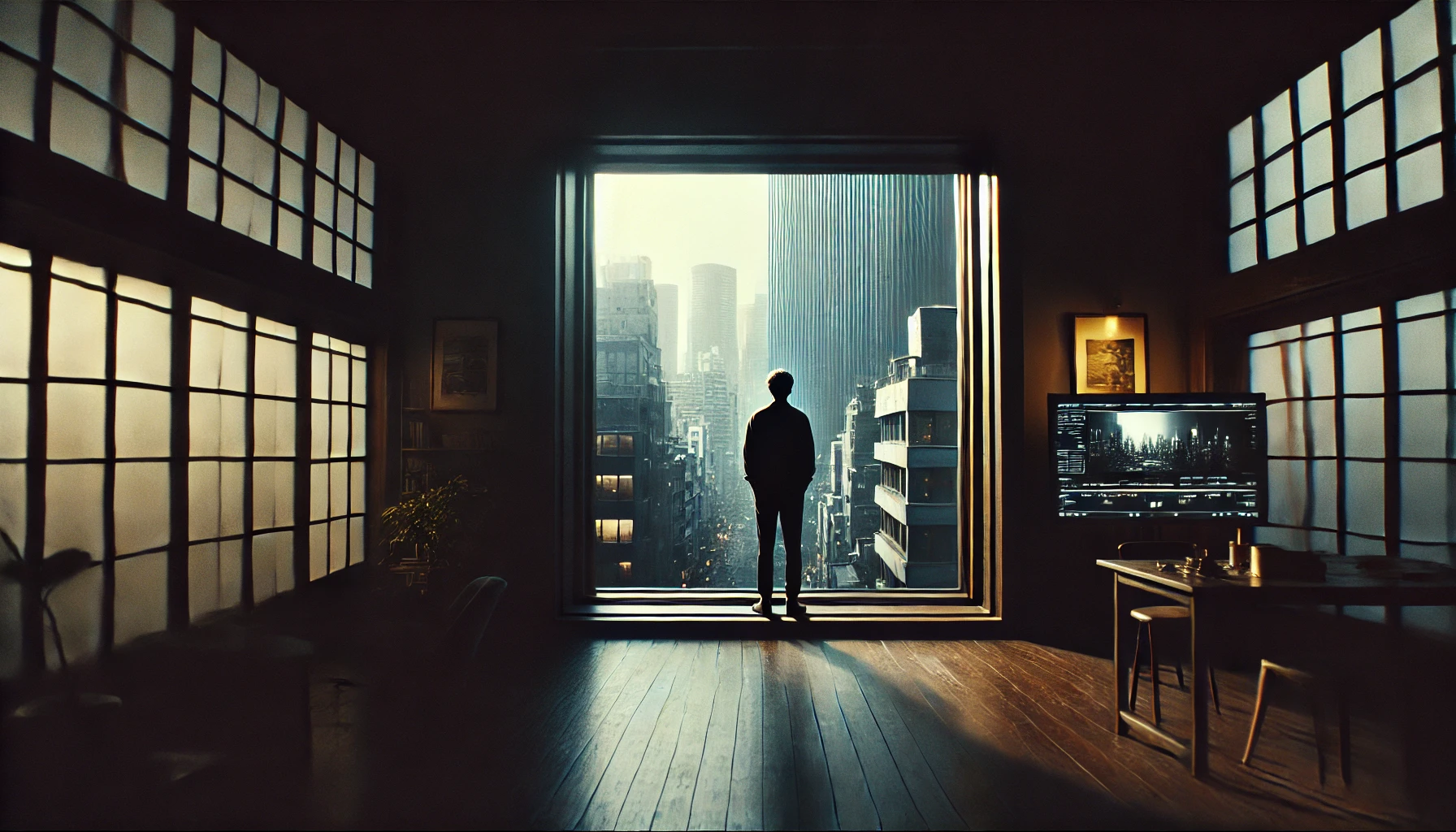Frames serve to establish the boundaries of the screen in visual media, and double-framing techniques provide visual emphasis and dimensionality by directing the eye, suggesting a theme, or dictating a framed narrative structure, and modern visual media have modified them to create a variety of effects.
In visual media, such as film and photography, a frame is the boundary that separates the on-screen area from the off-screen area. The act of capturing an object with a camera isolates a specific part of reality and frames it, implying the intention and message of the photographer. In this sense, the frame is more than just a boundary; it is one of the key elements of the visual communication medium.
The importance of frames can also be seen in our daily lives. The windows, mirrors, and door frames around us all establish certain visual boundaries that allow us to perceive space and more clearly recognize objects and people within it. For example, the outside world seen through a window is a self-contained frame, and the landscape or people within it naturally draws our attention. It acts like a frame in a movie or photograph.

In the process of capturing an object with a camera, we can intentionally set these boundaries to convey a certain message or trigger an emotion. However, sometimes we can create another frame within the frame by using objects that have a predominantly square or circular shape, such as doors, windows, columns, mirrors, etc. This technique is called “double framing” and the frame inside is called the “secondary frame”.
There are three general functions of secondary frames. First, it draws the eye to a person or object in the scene. By framing the object, it creates visual emphasis, and it’s easy to make it stand out even when it’s small or off-center in the composition. The more frames within a frame, the more layered the image becomes, adding depth and dimension to an otherwise bland image. In advertising, there are instances where a product is placed in a secondary frame to make it more persuasive and draw attention to itself. For example, popular cosmetics ads often use a model’s face in a mirror as a secondary frame, creating a dramatic contrast between the before and after shots of the product.
Second, secondary frames can also hint at the theme or content of the piece. The secondary frame visually separates the object inside from the outside, which often leads to a psychological disconnect, evoking feelings of restraint, alienation, and isolation. The secondary frame also creates an emotional distance between the object inside and the object outside. Some films repeatedly show a character through a door or window, suggesting his or her isolation from the world, or visualizing the character’s inner feelings of anxiety and alienation. For example, in the film ‘ Roman Holiday,’ a secondary frame shows the princess looking at the outside world through a window, visually conveying her isolated psychological state.
Finally, secondary frames can also serve to dictate a framed narrative structure, a “story within a story”. For example, a movie might consist of a character’s real life story and his imagined story, and the camera enters and exits from one story to the other through a window used as a secondary frame. This gives the reader the same experience as if they were traveling to another world through a book.
In the modern era, however, artists in visual media have begun to depart from the conventions of the secondary frame to achieve different effects. For example, by making it difficult to discern the shape of the image inside the secondary frame, they disrupt the viewer’s perceptual act, rendering the function of emphasis ineffective or creating narrative tension. In other cases, a door or window can be blocked off, rendering it ineffective as a secondary frame and revealing the enclosure of a space or figure, or an object within the secondary frame can be forced to cross or break its boundaries, creating a sense of curiosity and emphasizing the kinetic nature of the object.
Similarly, variations of the secondary frame have been utilized in digital media. Virtual reality (VR) and augmented reality (AR) technologies allow users to experience transcending the physical frame, enabling new forms of narrative structure and visual representation. These technological advances are playing an important role in further expanding the concept of secondary frames and expanding the possibilities of visual storytelling.
In conclusion, secondary frames play an important role in visual media, impressing audiences through a variety of functions and effects. They allow us to go beyond simply looking at the screen and experience the meaning and emotions behind it. Modern-day experiments and technological advancements are making this experience more colorful and interesting.
